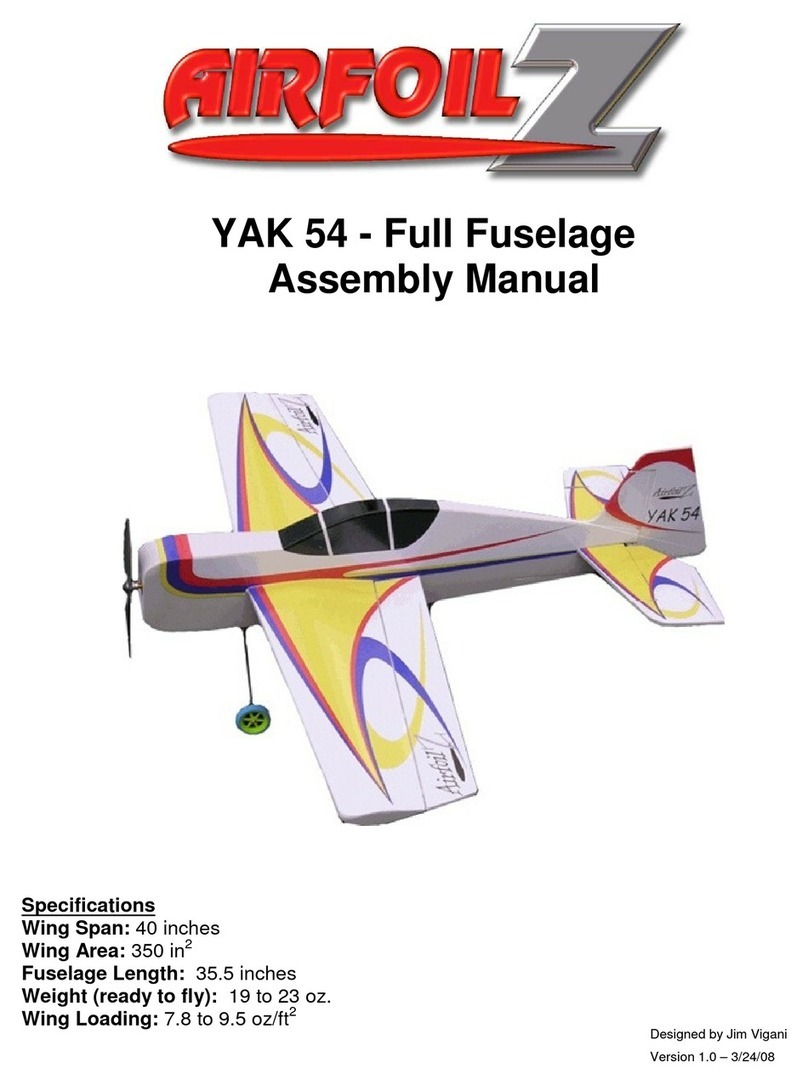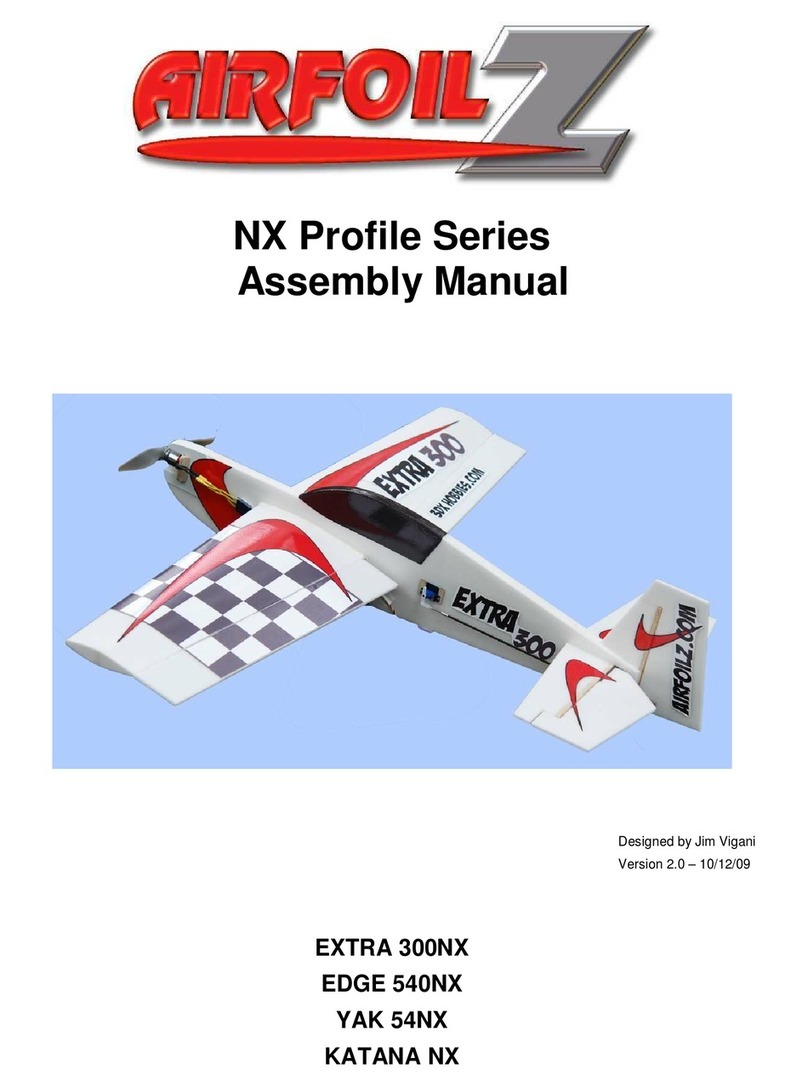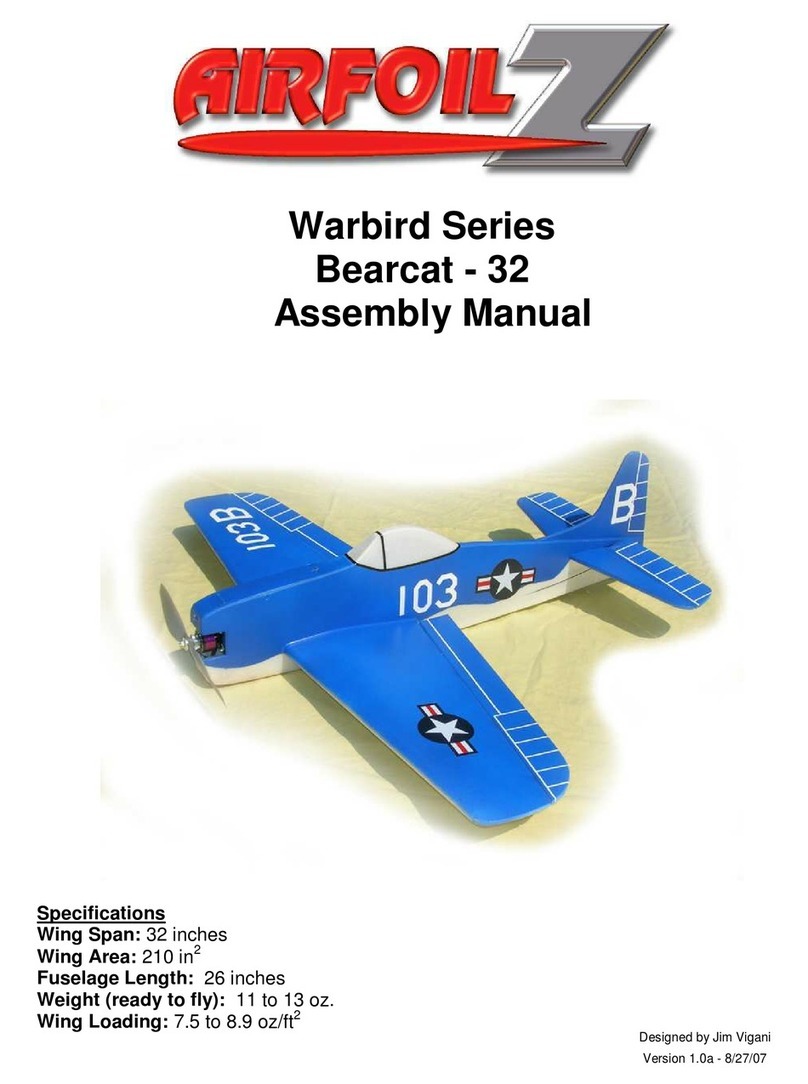
Introduction:
Thank you fo choosing the Ext a 260 ai plane. We have taken g eat ca e to p ovide a design and
kit components that, when p ope ly assembled, will give you a high quality model with outstanding
pe fo mance. While the assembly is not complicated, the quality and ultimate pe fo mance of you
model will depend on the ca e you take while building. Please read these instructions carefully
and be sure that you understand them before you start. Take ca e to assemble the components
as shown and in p ope alignment. Please note that some of the parts shown may be different
in material from those provided in the kit. The installation of these parts is unaffected by the
material change.
Warning
This radio-controlled model is not a toy and, if operated inappropriately can cause serious
bodily injury and property damage. It is the buyer’s responsibility to assemble the kit correctly
and properly install the motor, radio and all other equipment. The model must always be flown in
accordance with the safety standards of the Academy of Model Aeronautics (AMA).
This model is desi ned for hi h performance. While it is reasonably simple to assemble, it is not
intended for the novice flier. Do not attempt to learn to fly with this model! If you are an
inexperienced modeler, we recommend that you et the assistance of an experienced modeler to
help you with the assembly and initial fli hts. There are many local clubs that can offer help with
assembly and fli ht instruction. Information on local clubs can be found throu h the Academy of
Model Aeronautics. The AMA has over 2500 chartered clubs throu hout the country. Information
on the AMA can be found at www.modelaircraft.or .
We do not recommend the use of hot lue for mountin components such as servos, control horns,
receivers or speed controls.
Recommended Power System:
This plane has been designed to use a 150 to 250 watt powe system. Recommended moto s
include the Hacke A20-20L, Sco pion 2215-18, o AXI 2217-16 with a 20 to 25 amp speed
cont olle , and a 1320 to 2100 mAh, 3S Li-poly batte y with a 10x4.7 o 10x5 p opelle . Othe powe
systems with simila capabilities can be used. Pe fo mance will va y depending on the specific
powe system selected. Fo info mation on alte nate powe systems please visit
http://3dxhobbies.com o you local hobby shop.
© Copy ight 2007 all ights ese ved
3































